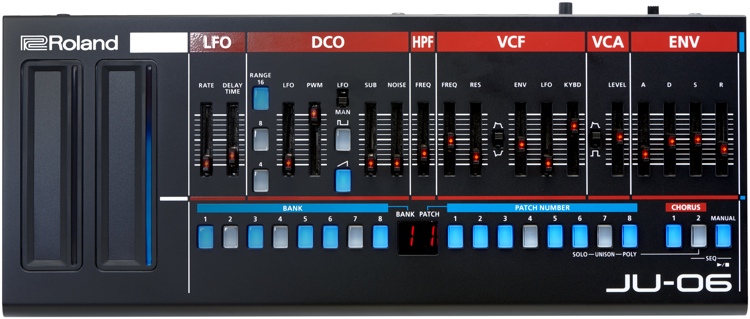Now let's study the filters of the JU-06.
The HPF is a high-pass filter; it allows for cutting the low frequencies. The original Juno 106 had 4 steps while this one is a continuous filter. By adjusting the FREQ slider, frequencies below the cutoff frequency will be cut. Just as the Juno 106, on its lowest setting it acts as a bass boost and will be neutral at 25%.
The VCF (voltage controlled filter) is a low pass filter. This one lets the low frequencies pass and cuts the highers frequencies.
The FREQ slider set the cutoff frequency point. Anything above the cutoff frequency will be cut.
The RES slider controls the filter resonance, which amplifies frequencies around the cutoff frequency, leading to a more "nasal" sound. At very high resonance settings, the filter starts to self-oscillate, i.e. you will hear the cutoff frequency as a discrete, whistling tone. This is particularly interesting when the cutoff frequency is being modulated, which can lead to effects like the typical "laser gun" sound.
The polarity switch allows you to reverse the ADSR pattern.
The ENV slider permits the adjustment of the depth by which the envelope controls the cutoff frequency. This helps you achieve the "filter sweep" effect used for brass and strings.
The LFO slider allows the use of the LFO to variate the cutoff frequency. This will help generate the "wah-wah" sound.
The KYBD slider permits the cutoff frequency to be controlled by the keyboard. When a positive amount is applied, the higher keyboard notes will result in brighter notes.









